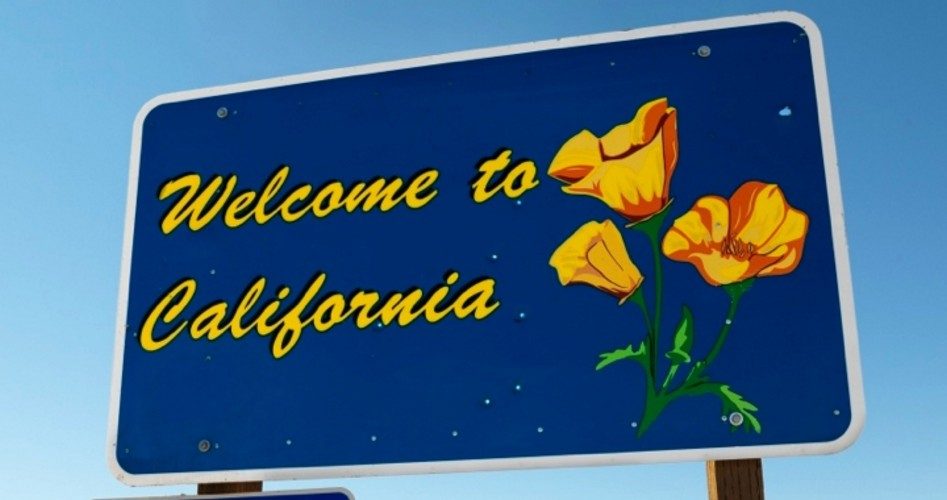
“Secession is a deeply American principle. This country was born through secession.”
— Ron Paul
Voters in two northern California counties, Del Norte and Tehama, will soon decide whether they support a proposal to secede from the rest of the state and form a new sovereignty known as the state of Jefferson.
Within days voters will express their will on Measure A which would, according to the Los Angeles Times, “essentially ask the Board of Supervisors in each county to take up the matter and officially discuss supporting the secession movement, which has so far been joined by nearby Modoc, Siskiyou and Glenn counties.”
Within the would-be independent republic, there are 16 counties with a total population of more than 450,000. The area makes up approximately one-fourth of California’s land mass. The state would be over twice the geographical size of New Hampshire.
Although it is often painted as reactionary or racist, this movement is not new. A story chronicling a similar effort involving several Colorado counties highlighted some unsuccessful secession attempts:
• Arizona: In February 2011, Tucson politicians and activists tried to create the state of Baja Arizona.
• California: One of the most common places for threats of secession. Most recently, conservative counties proposed a Southern California.
• Colorado: In the mid-1930s, Huerfano County wanted to secede from the state.
• Florida: Most recently in 2011, the South Florida metropolitan area attempted to split Florida into North Florida and South Florida.
• Illinois: In November 2011, state representatives revived a proposal to split the state into Chicago and Illinois.
• Kansas: In 1992, a group of southwestern Kansans wanted a few counties to secede from Kansas and become West Kansas.
• Maine: In 2005, politicians of Aroostook County asked the state legislature to make the county a new state.
• Maryland: In September 2009, a Frederick County commissioner proposed that the county secede from Maryland.
• Massachusetts: In 1977, a Statehood Support Committee of Martha’s Vineyard promoted the secession of Nantucket from Massachusetts.
• Minnesota: In 1997, the Northwest Angle region suggested seceding from the United States and joining Canada.
• Nebraska: Panhandle residents threatened to secede from Nebraska and join Wyoming.
• New Mexico: From 1970-90, local activists proposed that the southern half become West Texas and the eastern half become North Texas.
• New York: In 2009, proposals were floated for a New York and West New York.
• Ohio: In 2005, a county executive of Summit County wanted Akron to secede from Ohio and become Northeast Ohio.
• Oregon: In 2008, there was a proposal to secede eastern Oregon and eastern Washington and join the two together.
• Utah: In 2008, the southern part of Utah wanted to form its own state.
• Vermont: In 2004 and 2005, the town of Killington voted to secede from the state and become part of New Hampshire.
Less than a decade ago, Ward 8 in Washington, D.C., entertained a proposal to separate from the federal district and join Maryland. In 1991, a rural section of Maricopa County, Arizona, considered breaking away from Phoenix and forming a state named Red Mountain because of the metro area’s receipt of most of the tax dollars.
California residents of the proposed state of Jefferson who support the breakaway point to onerous federal regulations and a “culture clash with urban areas.”
A story in Liberty Voice portrays the proposal as something reminiscent of American colonial complaints — complaints that led to our own secession.
Aaron Funk, a resident of Crescent City in Del Norte County, pointed out that the metropolitan area of Los Angeles has 20 state senators, and there are 10 who represent the San Francisco Bay Area. Meanwhile, one state senator is shared amongst 11 counties in Northern California. The residents of those counties do not feel that they have the representation they deserve.
In reference to Ron Paul’s statement regarding the preeminent place secession holds in the history of the United States, noted economist Thomas DiLorenzo wrote:
How else could one possibly interpret the following passage from the Declaration but a declaration of secession or separation from Great Britain?: “That these United Colonies are, and of right ought to be, FREE and INDEPENDENT STATES; that they are absolved from all allegiance to the British crown and that all political connection between them and the state of Great Britain is, and ought to be, totally dissolved.” [Emphasis in original.]
In his first inaugural address Jefferson advocated attempts at persuasion, as opposed to a Lincolnian waging of total war of terrorism on American citizens who sought disunion: “If there be any among us who would wish to dissolve this Union … let them stand undisturbed as monuments of the safety with which error of opinion may be tolerated where reason is left to combat it.”
In a January 29, 1804 letter to a Dr. Joseph Priestly, who had inquired about the prospect of the New England Federalists seceding from the union, as they were plotting to do at the time, Jefferson said: “Whether we remain in one confederacy, or form into Atlantic and Mississippi confederacies, I believe not very important to the happiness of either part. Those of the western confederacy will be as much our children and descendants as those of the eastern ….” If there was a separation in the future, Jefferson continued, “I should feel the duty & the desire to promote the western interests as zealously as the eastern, doing all the good for both portions of our future family which should fall within my power.”
The federal government has been all but forcibly marching patriots down this road for nearly 200 years. It was the “strong centralizing tendencies” of the John Quincy Adams administration in 1824 that solidified the states’ rights sentiment in the South. The federal government today has those same tendencies toward aggregation of all power. The contemporary gluttony of power by successive presidential administrations and congresses pushed the states onto their current track toward nullifying several federal acts and, possibly, seceding from the union.
Today it is centralism, not sectionalism as in the 1820s, that threatens the Union. The central government — on its own and through its all-but-official media mouthpieces — elevates itself above all and demands dominion over the lives of its citizens and over every last acre of the formerly sovereign territory of this nation. Any reluctance to toe the party line is immediately punished through legislation and regulation that chokes the economic life of states.
In the early 19th century, as well as today, secession and nullification were prompted by a Congress that created a system wherein it had to legislate to win votes. States need not secede to rid themselves of this repugnant cronyism, however. States simply must nullify all acts of the federal government not authorized by the powers allotted to it in the Constitution.
Although secession is not the “rightful remedy” proposed by Thomas Jefferson, it is a legitimate weapon in the war against the growth of an all-powerful central government with states serving as nothing more than subordinate administrative outposts. And, in the words of Jefferson himself: “That whenever any Form of Government becomes destructive of these ends, it is the Right of the People to alter or to abolish it, and to institute new Government, laying its foundation on such principles and organizing its powers in such form, as to them shall seem most likely to effect their Safety and Happiness.”
Even the most ardent advocate of a stronger central government, Alexander Hamilton, recognized the inherent right of revolt in the face of unfettered federal despotism.
“To coerce the States [to remain in the Union] is one of the maddest projects that was ever devised,” Hamilton declared, noting that “a government that can only exist by the sword,” with “Congress marching the troops of one State into the bosom of another” will be a nation always at war. Hamilton then asked a very pointed question with repercussions for our own day:
Can any reasonable man be well disposed towards a government which makes war and carnage the only means of supporting itself — a government that can exist only by the sword? Every such war must involve the innocent with the guilty. This single consideration should be sufficient to dispose every peaceable citizen against such a government.
On June 3, voters in Del Norte and Tehama counties will decide whether to pursue the formation of the Republic of Jefferson.
Joe A. Wolverton, II, J.D. is a correspondent for The New American and travels nationwide speaking on nullification, the Second Amendment, the surveillance state, and other constitutional issues. Follow him on Twitter @TNAJoeWolverton and he can be reached at [email protected].



